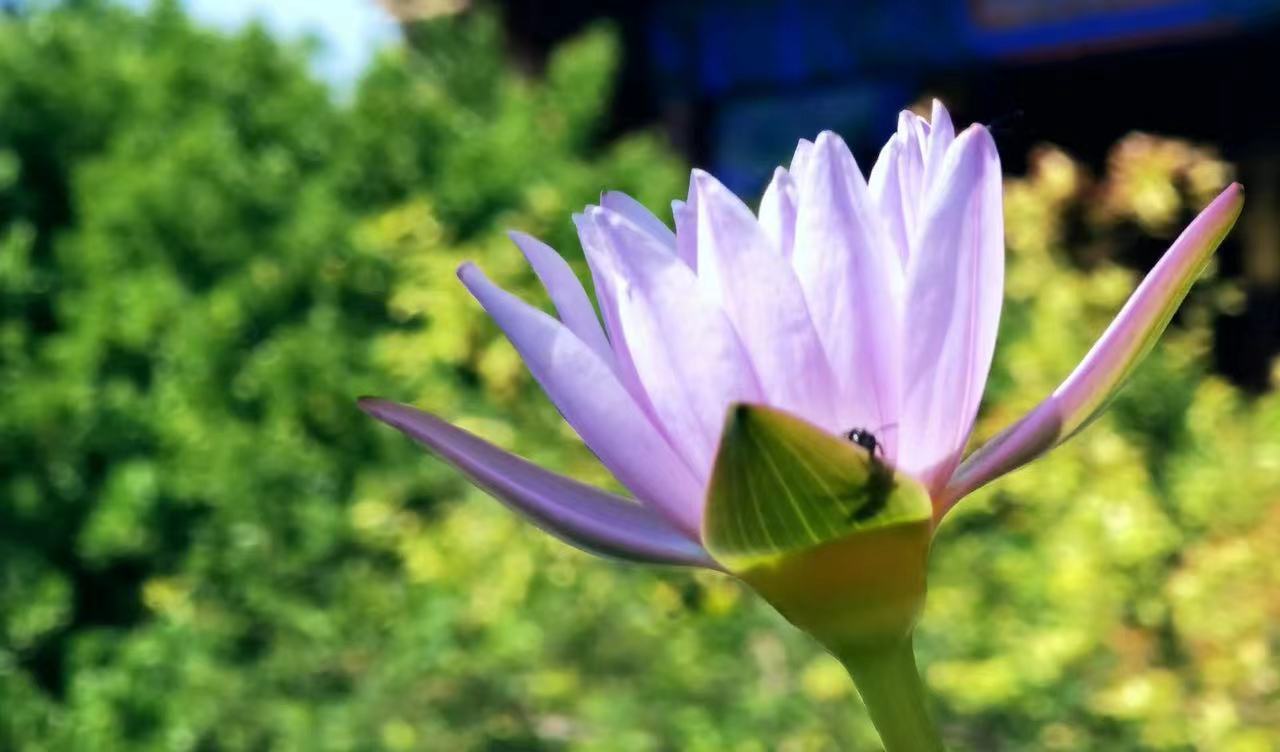Lobelia chinensis and lotus, although both have the word "lotus" in their names, belong to completely different plant species and have their own unique morphological characteristics and growth habits.
Lobelia chinensis: It belongs to the perennial herbaceous plant of the Lobelia genus in the Campanulaceae family. It takes root on the nodes and the branches are upright. The leaves are alternate and grow fine leaves on each node. The most remarkable feature is its flower. The flower shape is similar to a lotus, but each flower only blooms on one side. The light red-purple petals only show half of their beauty, so it is named "Lobelia chinensis". This unique flower shape is extremely rare in nature and gives Lobelia chinensis extremely high ornamental value.
Lotus: It belongs to the aquatic plant of the Nymphaeaceae family and is commonly found in waters such as ponds and lakes. The lotus flower is huge and has rich colors. Commonly seen are white, pink, yellow, etc. The petals are complete and have distinct layers. The lotus not only has beautiful flowers, but its leaves are also extremely characteristic. They are as wide as a plate and can carry water droplets without getting wet. It also has the reputation of "emerging unstained from the mud".
Lobelia chinensis: Generally, it grows in warm and humid environments, such as beside fields, beside ditches, or in moist soil. This plant has strong growth ability and drought tolerance and can adapt to various environmental conditions.
Lotus: It is completely an aquatic plant and must rely on the water environment to grow. They usually take root in the mud, and the leaves and flowers stand upright on the water surface, showing a unique ecological landscape.
The efficacy and function of Lobelia chinensis
Lobelia chinensis is not only a plant with ornamental value, but its whole herb can also be used as medicine. It has various effects such as clearing heat and detoxifying, promoting diuresis and reducing swelling, and is widely used in the field of traditional Chinese medicine.
Lobelia chinensis is mild in nature and can clear the heat and fire in the body and reduce various symptoms caused by excessive internal heat, such as skin eczema and sores in the mouth. At the same time, it also contains detoxifying components such as sodium rhizoma corydalis and sodium succinate, which have a significant improvement effect on treating external injuries such as mosquito bites and snake bites.
Lobelia chinensis has a significant diuretic effect and can promote the metabolism and excretion of water in the body, thereby reducing symptoms such as edema and difficult urination. For patients with diseases such as liver cirrhosis, ascites, and nephrotic edema, Lobelia chinensis can be used as an adjuvant treatment drug under the guidance of a doctor.
Lobelia chinensis also has a certain anti-inflammatory effect and can treat various inflammatory diseases such as mastitis, otitis media, tonsillitis, and appendicitis. In addition, it can also be used to treat damp-heat jaundice, nephritis edema and other damp-heat symptoms to help patients relieve their conditions.
The external use of Lobelia chinensis also has significant curative effects. Mashing fresh grass and adding a little salt and applying it to the wound can treat external injuries such as snake bites and bee and scorpion stings. When used to treat skin diseases such as athlete's foot and eczema, decocting Lobelia chinensis and applying it to the affected area or performing local wet compresses can achieve the purposes of relieving itching, reducing inflammation, and reducing swelling.
In addition to the above main effects, Lobelia chinensis also has effects such as improving immunity and promoting blood circulation. However, it should be noted that although Lobelia chinensis has multiple medicinal values, its use must be under the guidance of a doctor to avoid adverse reactions due to improper medication.
Lobelia chinensis and lotus have significant differences in morphology, growth environment, and medicinal value. Lobelia chinensis occupies a place in the field of traditional Chinese medicine with its unique flower shape and rich medicinal effects and is a valuable resource worthy of our in-depth understanding and utilization.
What are the differences between Lobelia chinensis and lotus?

Share with
Tagged in :




Leave a Reply